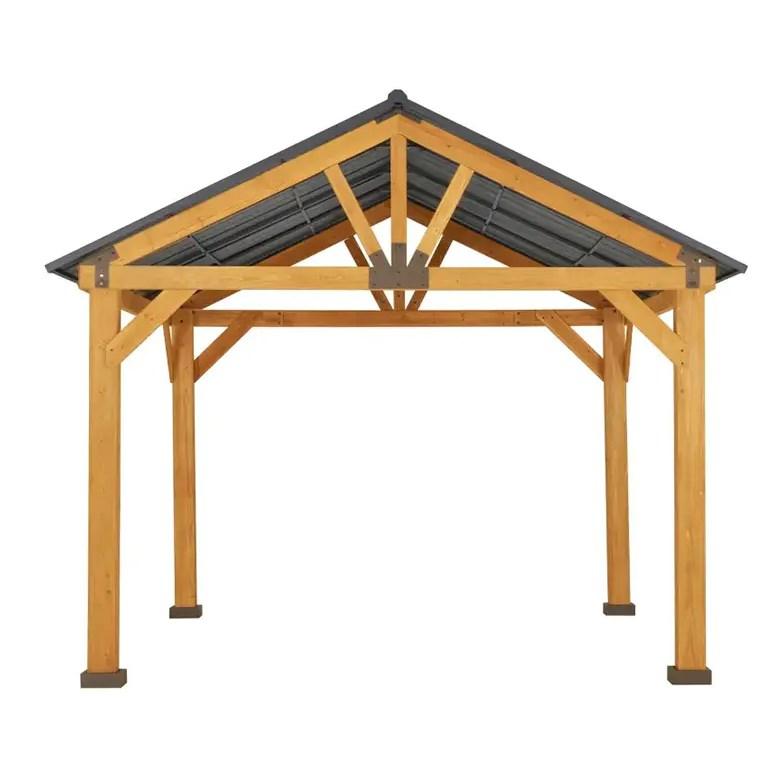The custom wooden gazebo, a staple in the landscape of outdoor living spaces, is often chosen for its aesthetic appeal and the sense of tranquility it brings to a garden or backyard. However, the question of its wind resistance is a critical factor for homeowners who wish to ensure that their gazebo remains a steadfast feature in their outdoor sanctuary. The ability of a custom wooden gazebo to withstand strong winds is a testament to its construction quality, the materials used, and the engineering that goes into its design.
When it comes to the wind resistance of custom wooden gazebos, several factors come into play. The type of wood used in construction is a significant determinant of the gazebo's ability to stand up to windy conditions. Hardwoods, such as teak, cedar, or redwood, are known for their durability and resistance to warping, which makes them ideal for custom wooden gazebos that are expected to endure various weather conditions.
The construction method is another crucial aspect that affects the wind resistance of custom wooden gazebos. Traditional joinery techniques, where wooden pieces are interlocked without the use of metal fasteners, can provide a strong and stable structure. Additionally, the use of diagonal bracing and crossbeams can significantly enhance the gazebo's structural integrity, making it more resistant to the forces of wind.
The design of the custom wooden gazebo also plays a role in its ability to withstand wind. A gazebo with a low profile and a design that minimizes surface area exposed to the wind will naturally have better wind resistance. Roof designs that promote water runoff, such as pitched roofs, can also reduce the wind load on the structure by minimizing the surface area that the wind can act upon.
Another important consideration is the anchoring and foundation of the custom wooden gazebo. A well-anchored gazebo, with a solid foundation that is dug deep into the ground, can provide the necessary stability to resist wind forces. This is particularly important in areas prone to high winds or storms, where the gazebo must be able to withstand extreme weather conditions.
The maintenance of the custom wooden gazebo is also a factor that contributes to its wind resistance. Regular inspections and timely repairs can help identify and address any potential weaknesses in the structure. This includes checking for any signs of rot, insect damage, or loose connections that could compromise the gazebo's ability to resist wind.
In conclusion, the wind resistance of a custom wooden gazebo is a multifaceted issue that depends on the quality of materials, construction methods, design, anchoring, and maintenance. By choosing durable woods, employing robust construction techniques, designing with wind resistance in mind, and ensuring a solid foundation, a custom wooden gazebo can be a resilient addition to any outdoor space. Proper maintenance and regular inspections will further ensure that the gazebo remains a steadfast feature, standing strong against the elements for years to come. For homeowners looking to invest in a custom wooden gazebo, understanding these factors can help them make an informed decision and enjoy a gazebo that is not only beautiful but also built to last.


